In object-oriented programming, it is crucial how different components interact with each other. Particularly in the development of web applications, the routing solution is at the forefront. This guide discusses customizing the bootstrapping to integrate a tailored routing solution. You will learn how to structure your PHP class and how to handle different routes to make your application more flexible and scalable.
Key Insights
- The use of a dedicated class for routing simplifies route management.
- Associative arrays are useful for processing header data efficiently.
- The design allows for flexible handling of GET and POST requests.
Step-by-Step Guide
Creating the Routing Class
To organize access to routing data, you should create a new PHP file. This will function as the routing class. Name the file, for example, RoutingMapper.php. In this file, you will define the RoutingMapper class, which is well-suited for mapping resources to configurations.
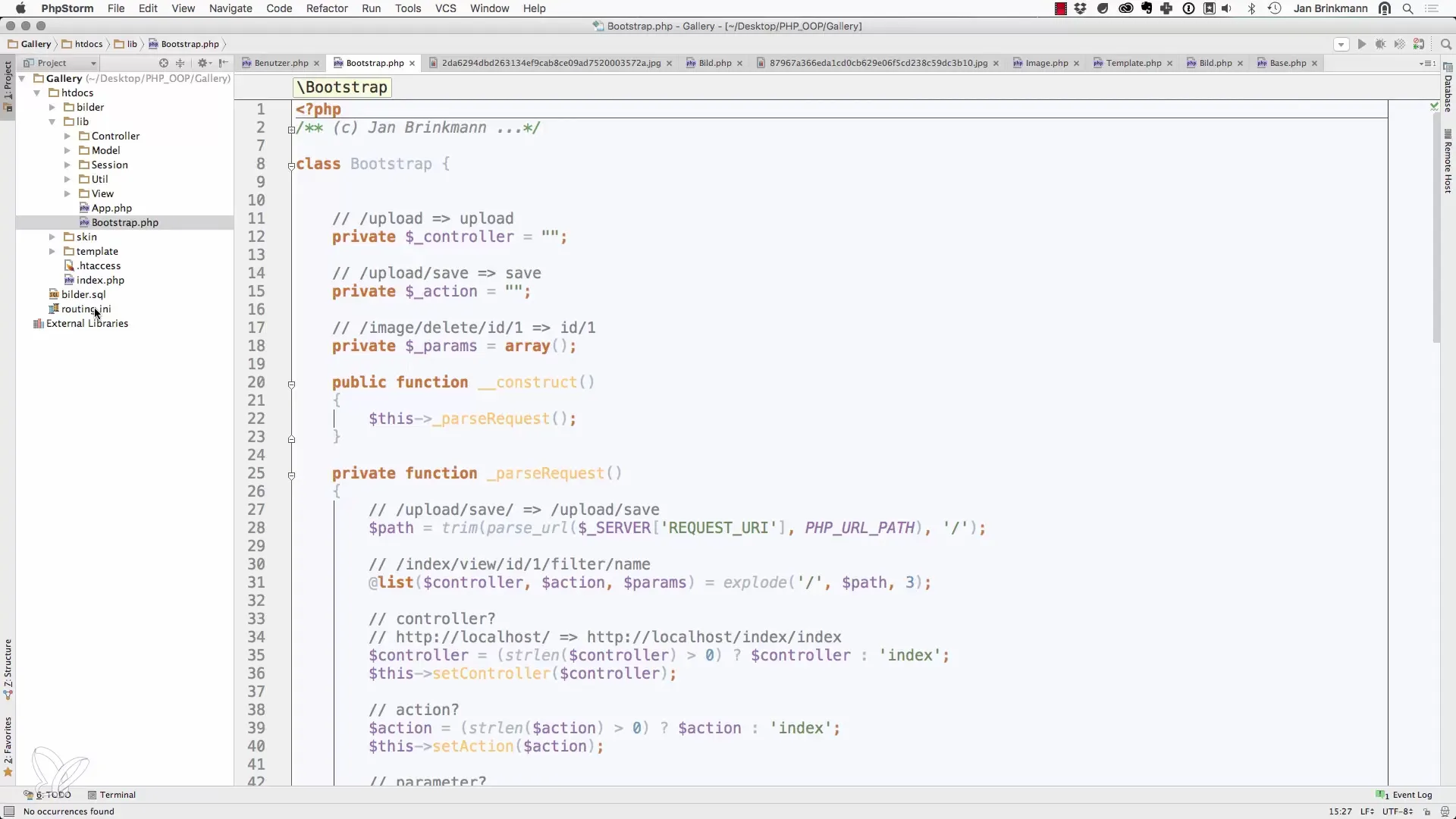
Initializing the Routes
Add a public function __construct() method. This method will be called when the object of the class is created. First, you need to set the base path from which the routes will be loaded. Go one level up to access the routing.ini file. In Unix file systems, you use.. to specify the path correctly.
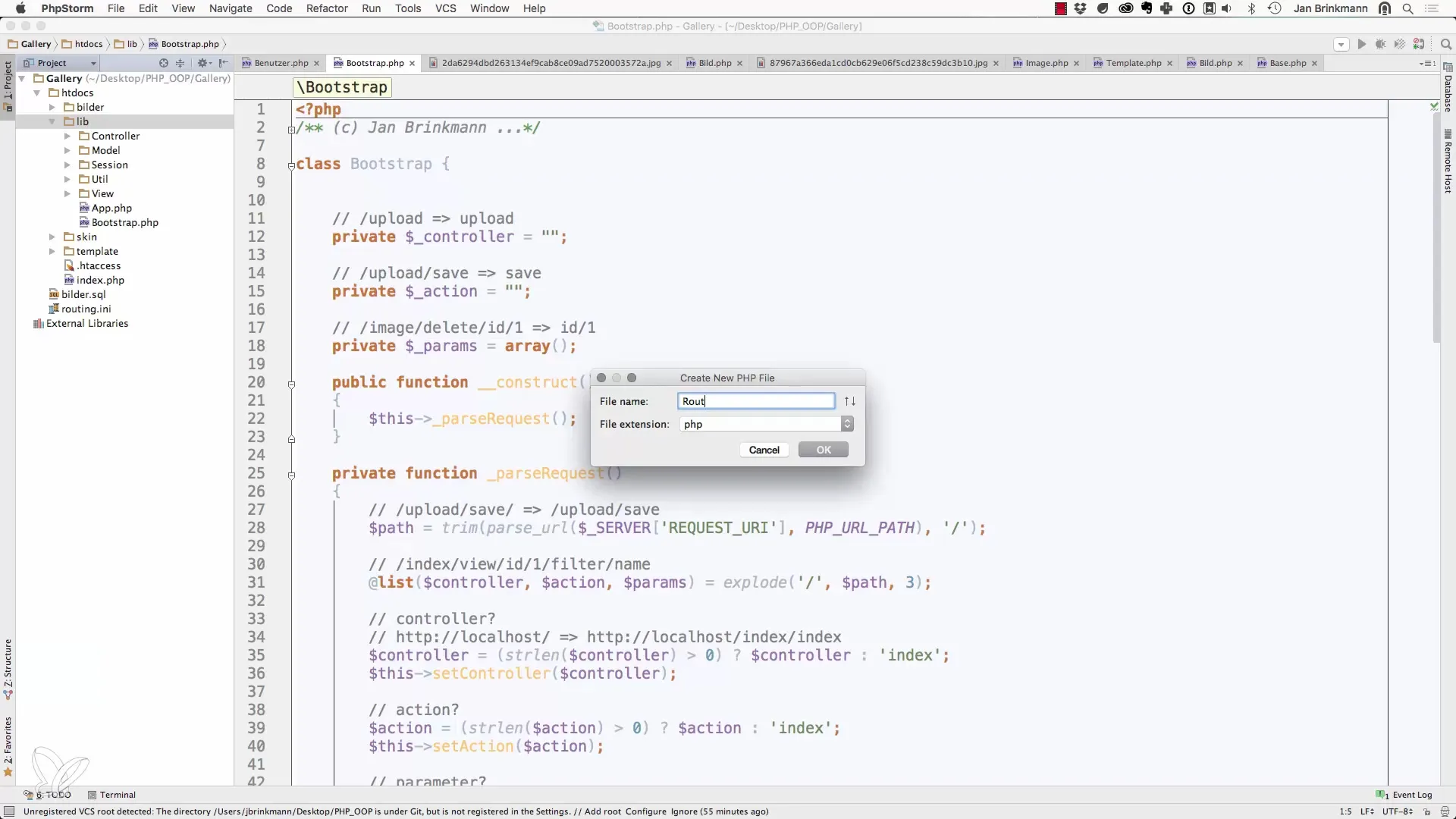
Processing Routing Data
To actually read the routes, you will use the method pass.ini, resulting in an associative array with the headers being generated. Set a flag so that the header data is processed accordingly.

Configuring the Resource String
Define a method public function getResourceConfig() within the class. This method must process the resource string to return the associated configuration. Using the null coalescing operator (??), you can ensure that a value is always returned.
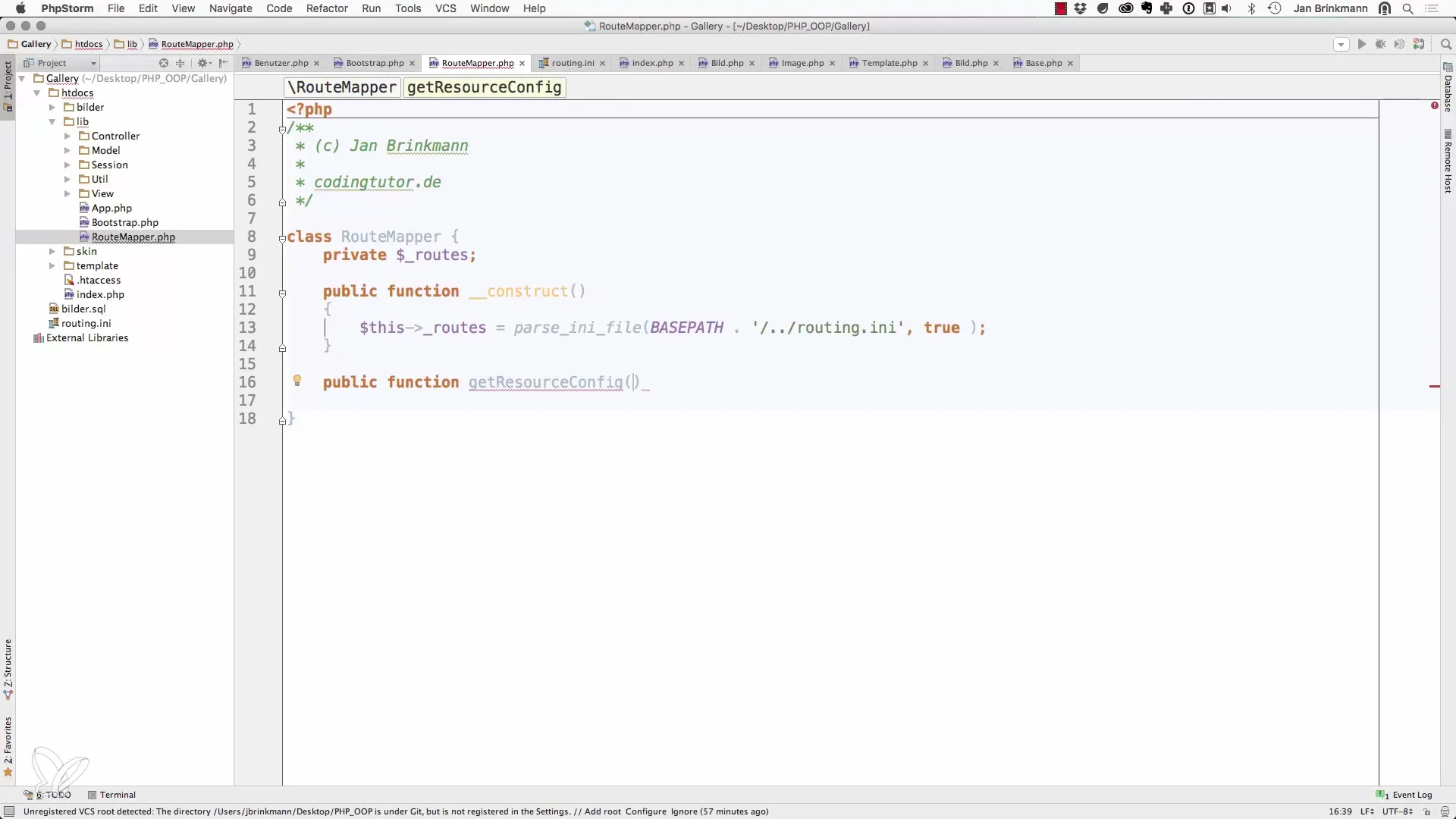
Instance of the Routing Class in Bootstrap
Back in your bootstrap class, you now need to create an instance of the RoutingMapper class. This instance is needed to access the routes during the bootstrapping process. Make sure to initialize the instance correctly.
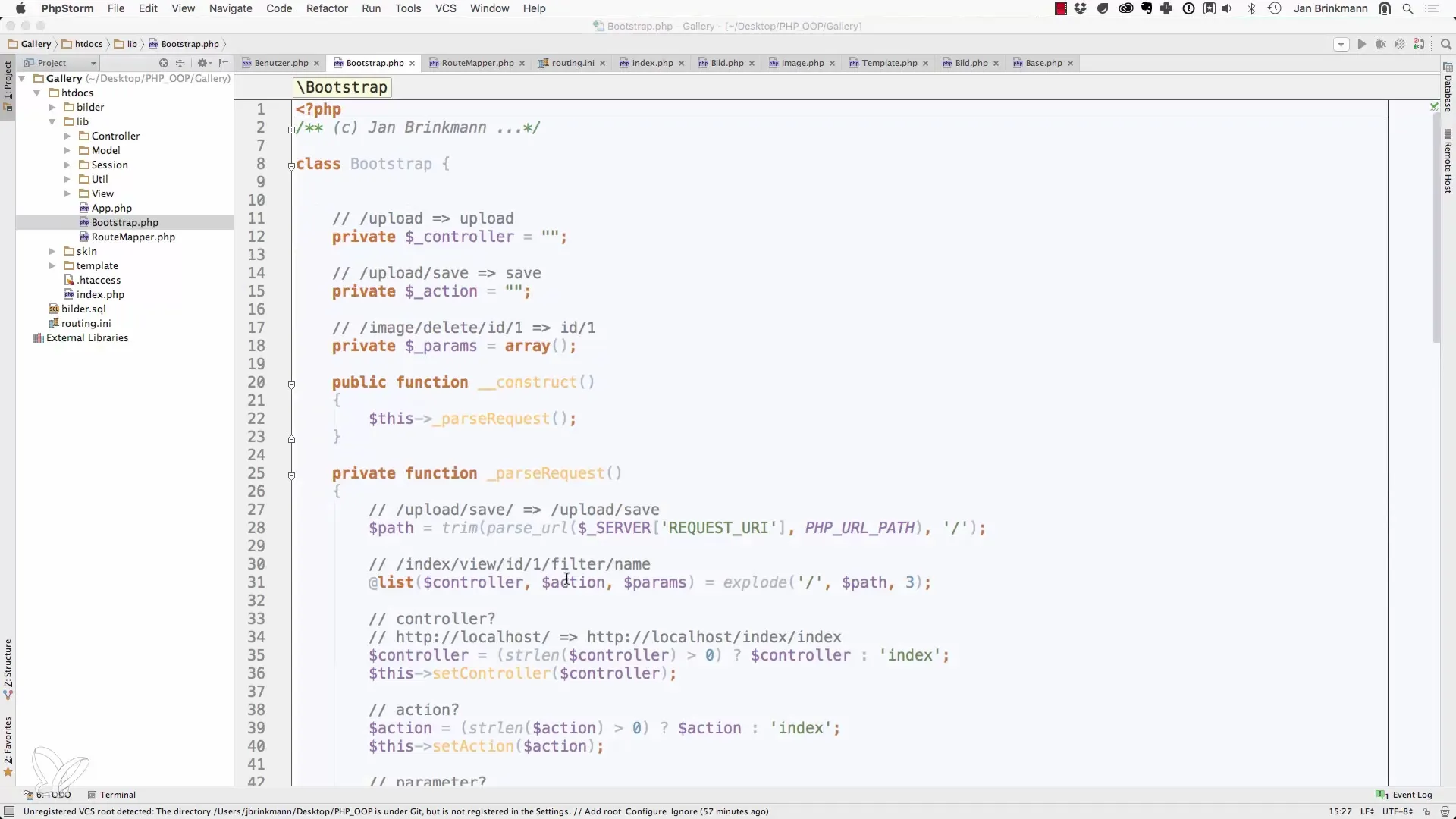
Handling Controllers and Actions
In the bootstrap flow, the controller can now be dynamically sourced from the configured routes. This allows you to handle controllers and actions in a flexible manner. You should also consider the HTTP method, which indicates the type of request.
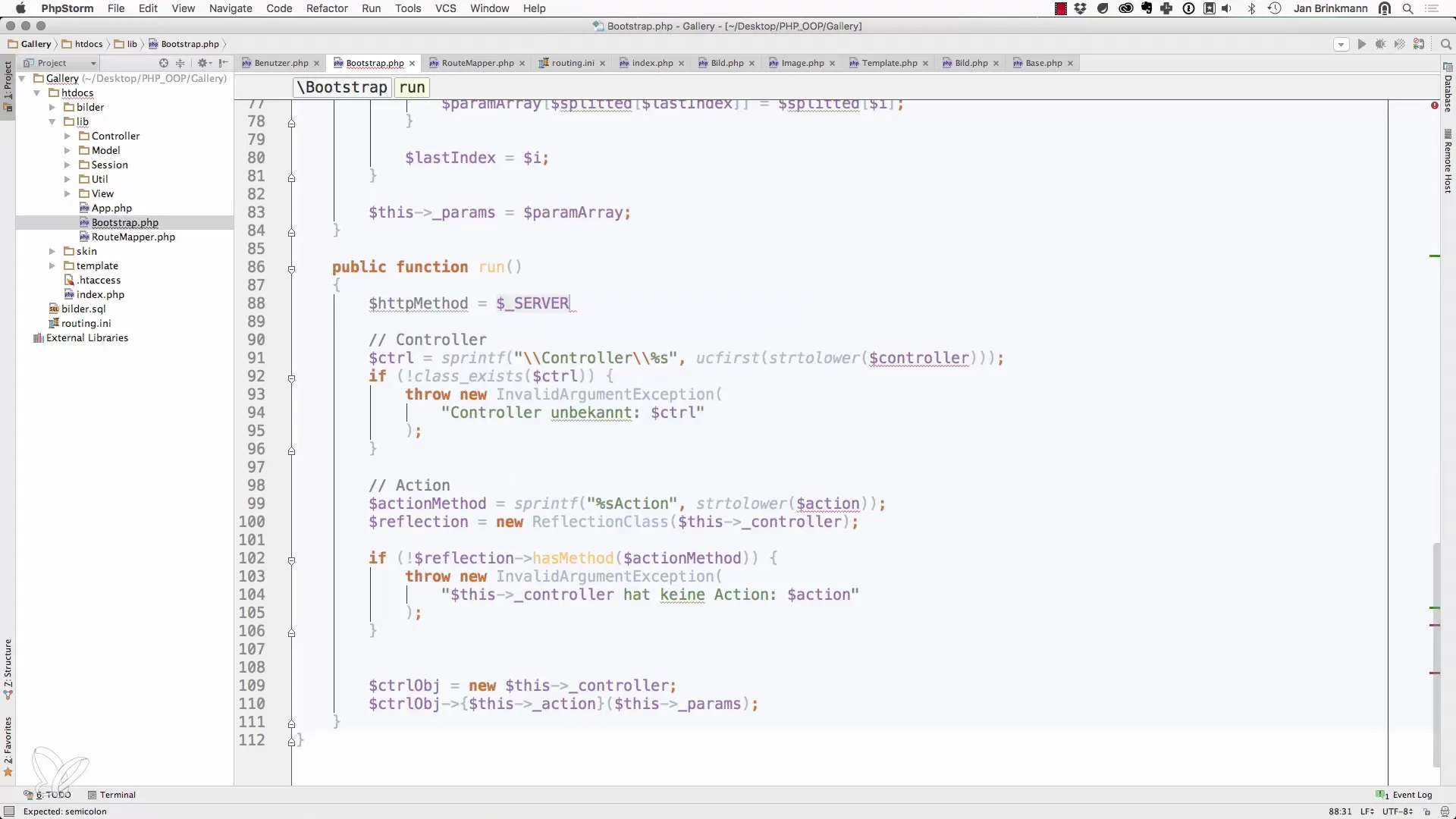
Error Handling
It is important that the configuration for the resources is present. If not, you should throw an exception to signal that an unknown resource request is made. If the controller or action is not found, provide clear error messages.
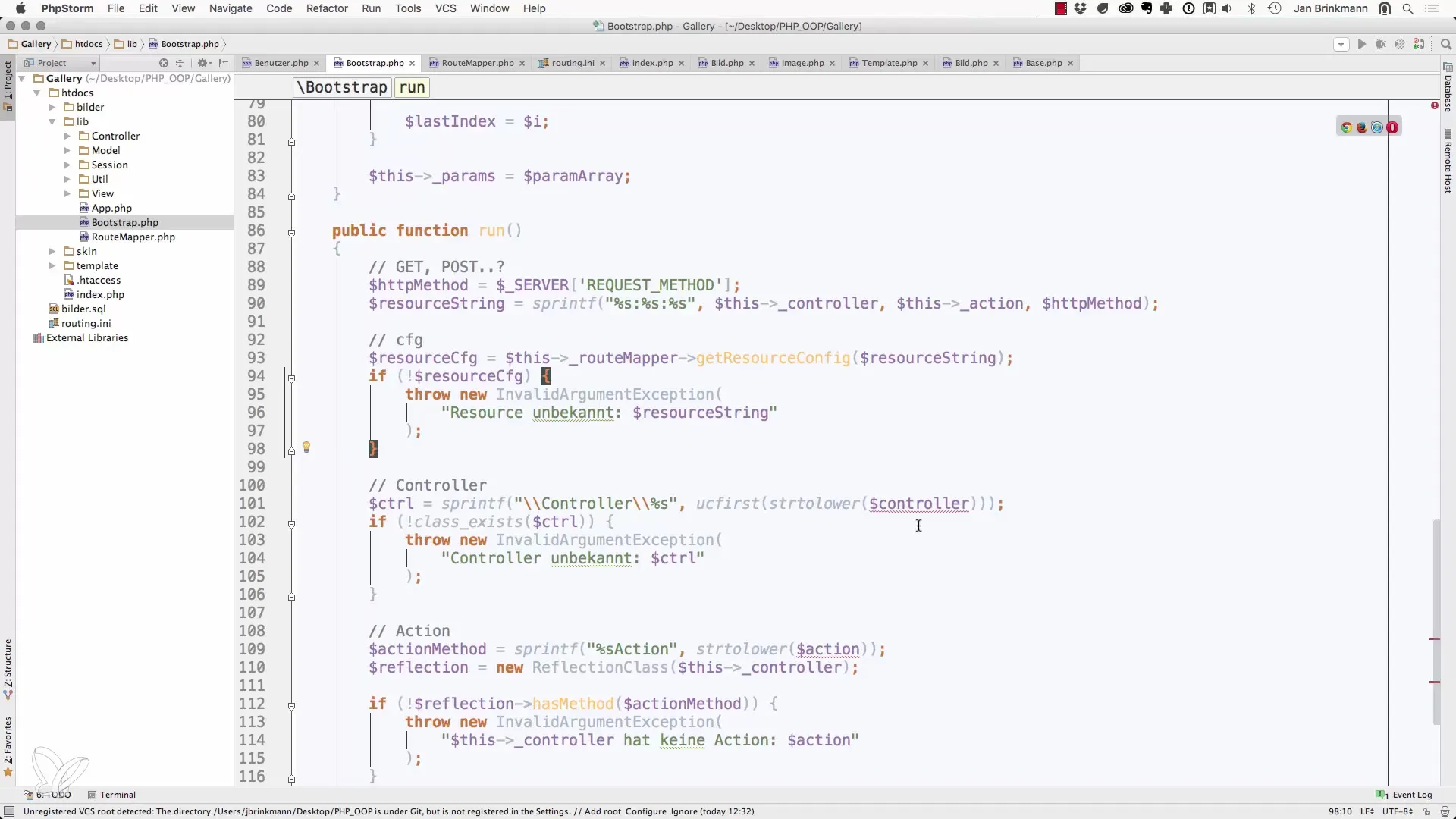
Testing the Implementation
After implementation, you should review your changes. You can do this by calling the API's URL and ensuring that the desired data is returned. Make sure that set GET and POST requests are also processed as expected.
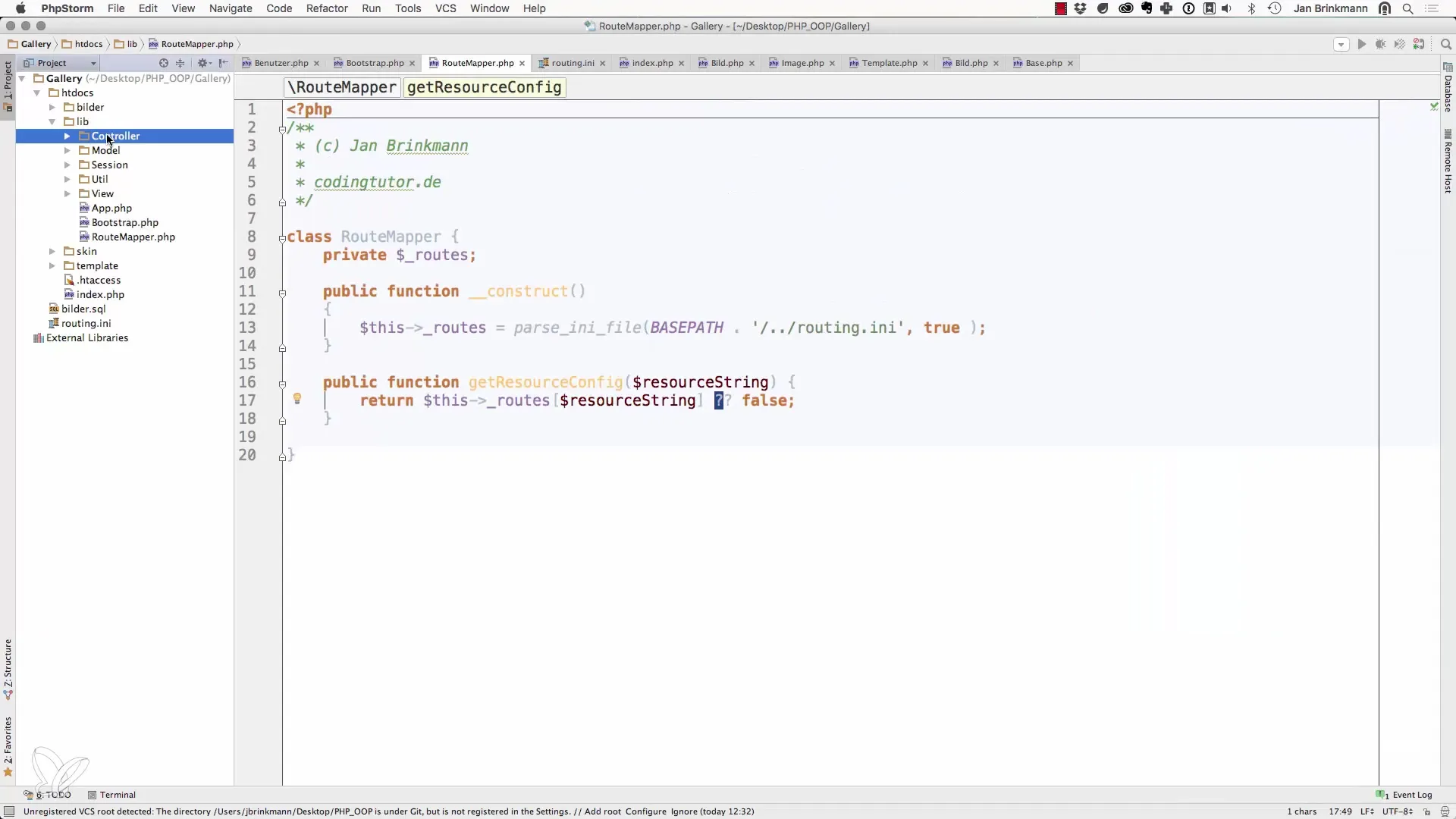
Flexibility Through Refactoring
After implementing, you can even change the names of controllers without affecting the API URLs. Changing the routing configuration leads to a flexible, maintainable, and scalable architecture.
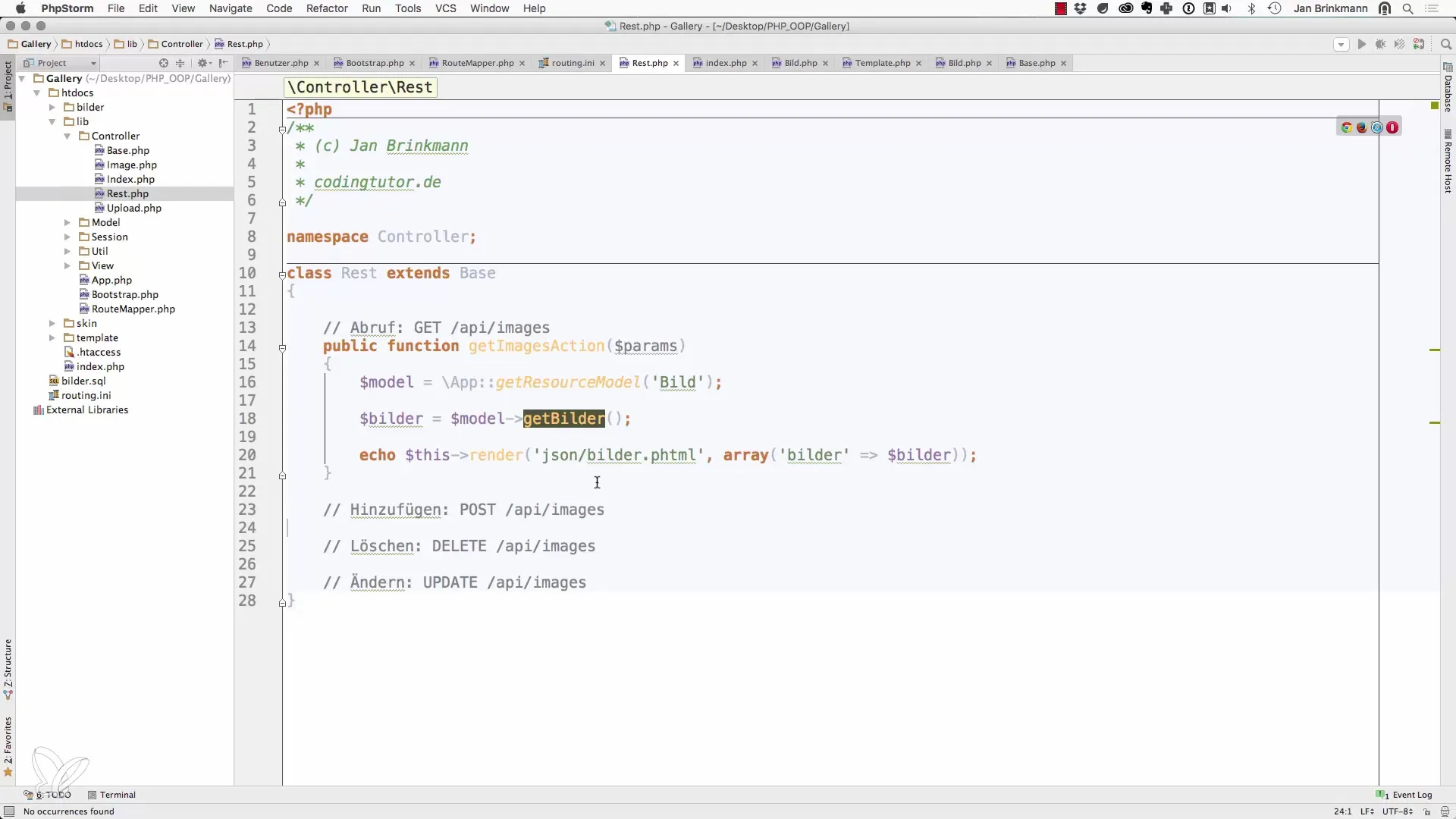
Summary - Customizing the Bootstrapping in Object-Oriented Web Programming with PHP
In this guide, you have learned step by step how to customize the bootstrapping to integrate a flexible routing solution. From creating a routing class to handling controller and action configurations, you have laid the groundwork for an effective and scalable web application architecture.
Frequently Asked Questions
What is the purpose of the Routing class?The Routing class simplifies managing and processing routes in your application.
How is the base path defined in the Routing class?The base path is defined to access one level higher in the file system.
What happens if a resource is not found?In this case, an exception is thrown indicating that the request goes to an unknown resource.
How does the API handle GET and POST requests?By uniquely mapping routes, the API can process different requests accordingly.
Can I change controller names afterwards?Yes, refactoring the controller names can be done without changing the API URLs.


